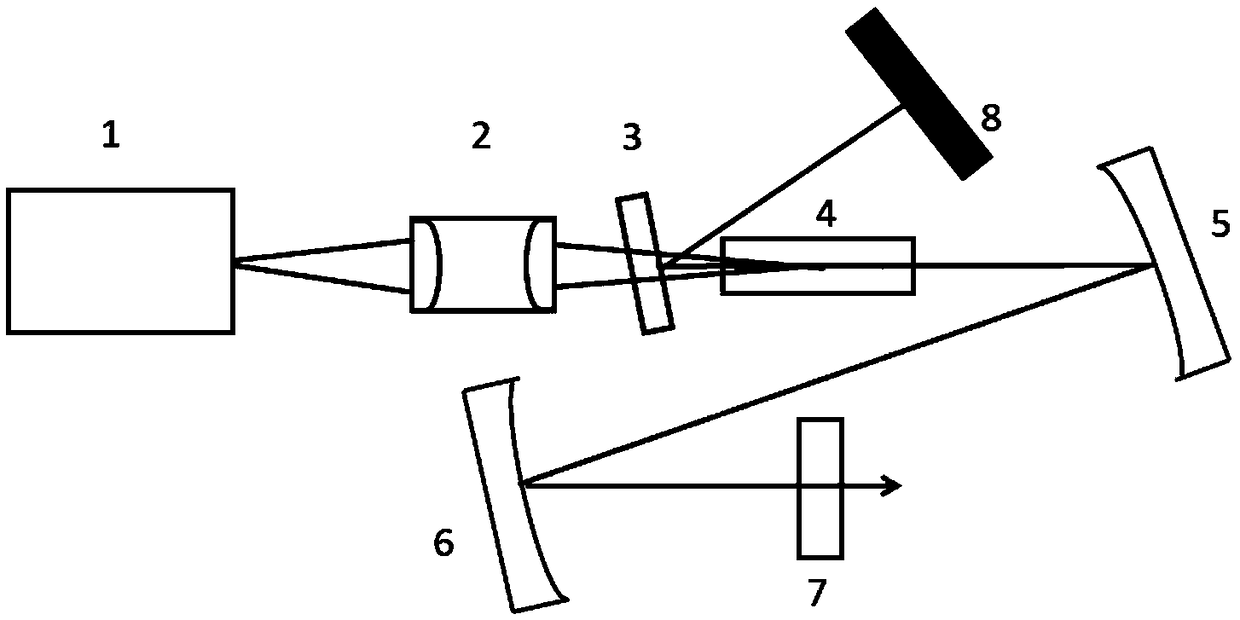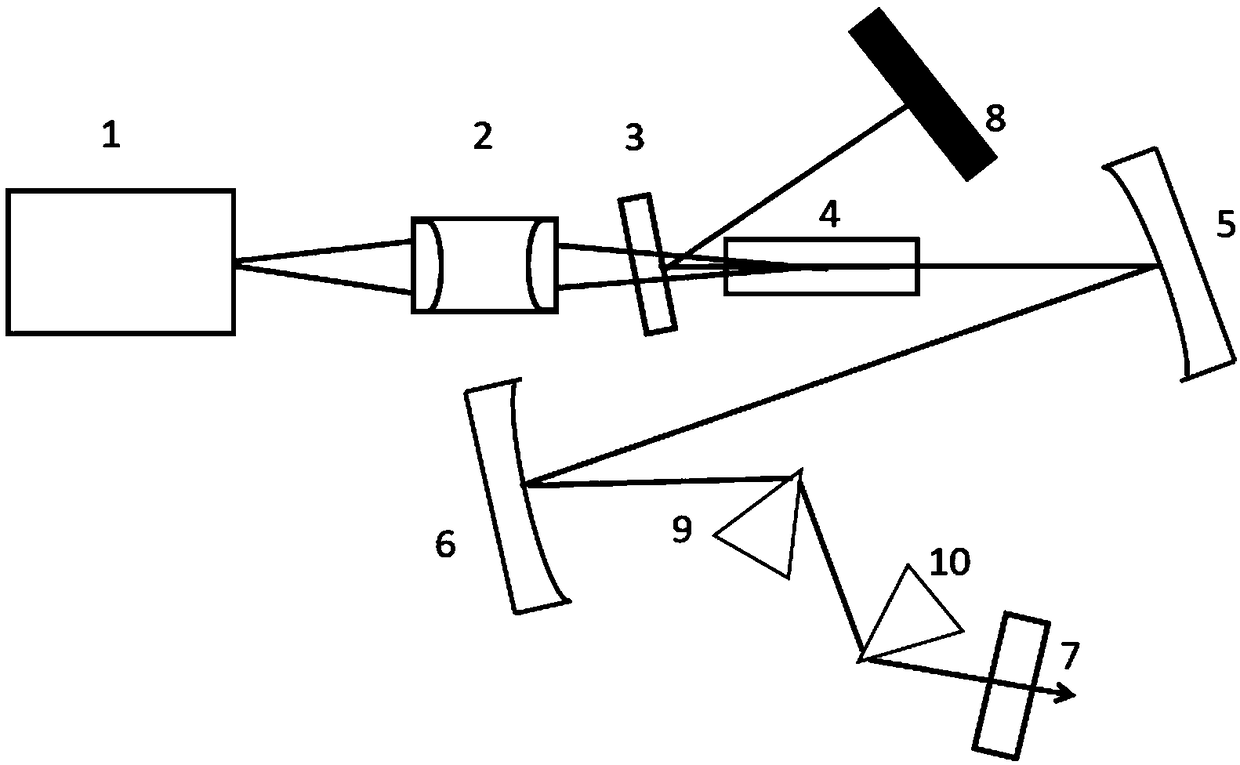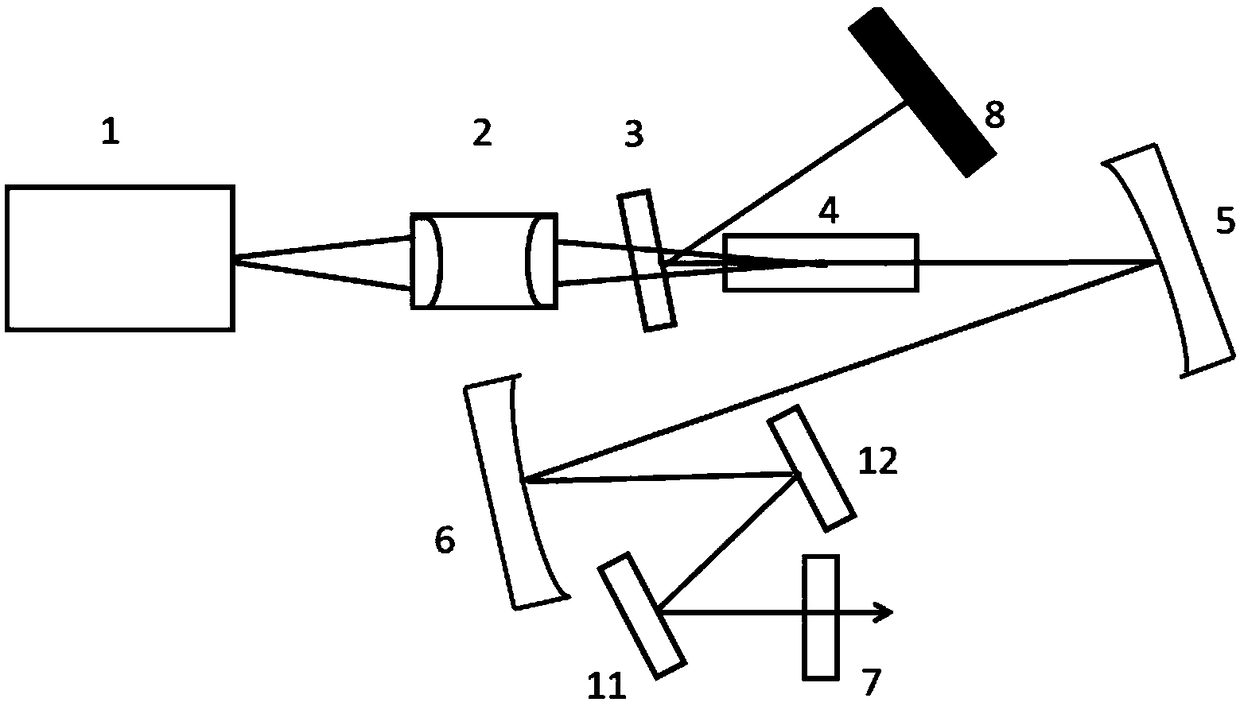2.9-micron intermediate infrared mode-locked laser
A technology of mode-locked lasers and Raman lasers, which is applied to lasers, laser components, phonon exciters, etc., can solve the problems of large modulation depth, narrow modulation bandwidth, and increased difficulty in stable mode-locking, achieving simple preparation, low cost effect
- Summary
- Abstract
- Description
- Claims
- Application Information
AI Technical Summary
Problems solved by technology
Method used
Image
Examples
Embodiment 1
[0031] A 2.9 µm mid-infrared mode-locked laser, such as figure 1 As shown, including 1150nm fiber Raman laser 1, collimation focusing system 2, laser input mirror 3, laser crystal 4, laser mirror A5, laser mirror B6, laser output mirror 7 and mode-locking components, 1150nm fiber Raman laser 1 can be linearly polarized;
[0032] The pump light output by the 1150nm fiber Raman laser 1 passes through the collimation and focusing system 2, the laser input mirror 3, and then enters the laser crystal 4, the laser input mirror 3, the laser crystal 4, the laser mirror A5, the laser mirror B6, The laser output mirror 7 and the mode-locking element constitute a laser resonator, and the generated mode-locked laser is coupled and output by the laser output mirror 7;
[0033] The laser crystal 4 is double-doped holmium and praseodymium lutetium lithium fluoride (Ho, Pr:LLF), and the mode-locking element is graphene or black phosphorus saturable absorber.
[0034] The 1150nm pumping ligh...
Embodiment 2
[0036] A 2.9 micron mid-infrared mode-locked laser, the structure is as shown in embodiment 1, the difference is, as figure 2 As shown, it also includes a pair of prisms (prism 9 and prism 10). The oscillating beam in the laser cavity is compensated for dispersion after passing through two prisms 9 and 10. This embodiment 2 compensates for the dispersion in the cavity and can generate femtosecond Order of magnitude mode-locked laser output.
Embodiment 3
[0038] A 2.9 micron mid-infrared mode-locked laser, the structure is as shown in embodiment 1, the difference is, as image 3 As shown, it also includes chirped mirrors 11 and 12. The oscillating beam in the laser cavity undergoes dispersion compensation after passing through the two chirped mirrors 11 and 12. This embodiment compensates for intracavity dispersion and can generate femtosecond-level Mode-locked laser output.
[0039] of the present invention Figure 4 It is the pulse sequence diagram of Embodiment 1 of the present invention, and the time scale is 200 μs / div. It can be seen from the figure that the present invention has achieved relatively stable continuous mode-locking;
[0040] Figure 5 It is the signal-to-noise ratio figure of Embodiment 1 of the present invention, as can be seen from the figure, the signal-to-noise ratio of the mode-locked laser can reach 58dB;
[0041] Image 6 It is the spectrogram of Example 1 of the present invention, and it can be ...
PUM
 Login to View More
Login to View More Abstract
Description
Claims
Application Information
 Login to View More
Login to View More - R&D
- Intellectual Property
- Life Sciences
- Materials
- Tech Scout
- Unparalleled Data Quality
- Higher Quality Content
- 60% Fewer Hallucinations
Browse by: Latest US Patents, China's latest patents, Technical Efficacy Thesaurus, Application Domain, Technology Topic, Popular Technical Reports.
© 2025 PatSnap. All rights reserved.Legal|Privacy policy|Modern Slavery Act Transparency Statement|Sitemap|About US| Contact US: help@patsnap.com



